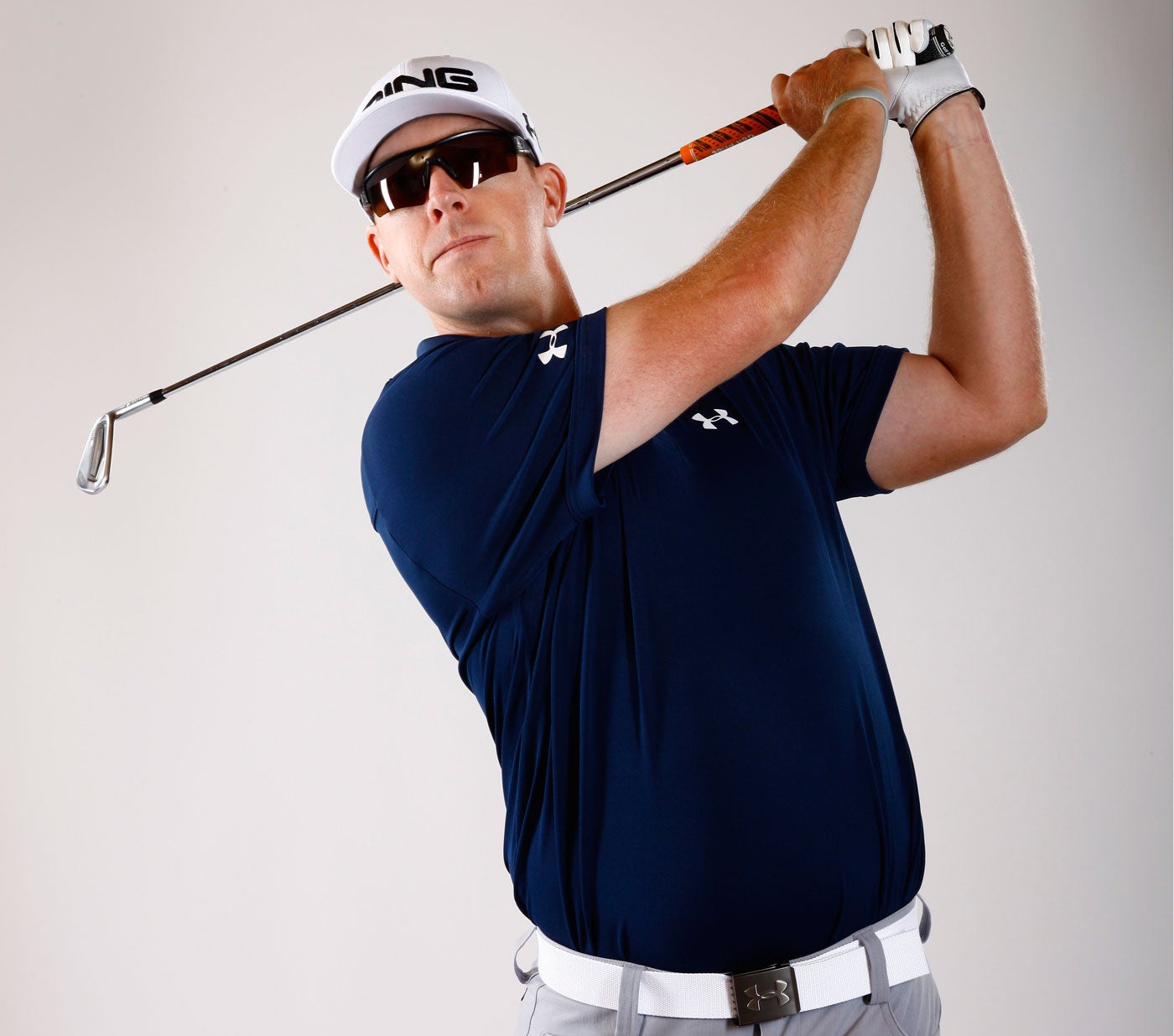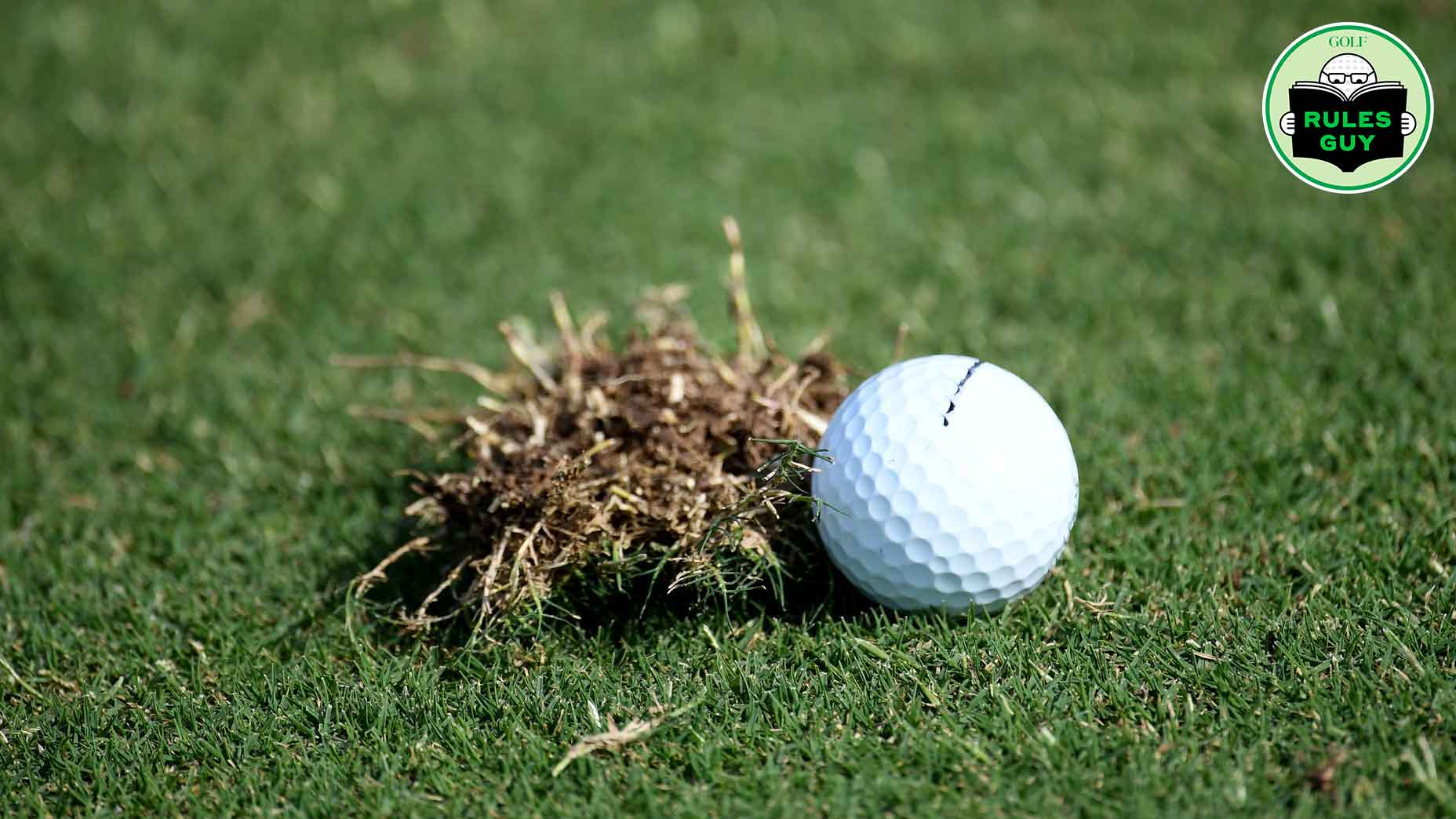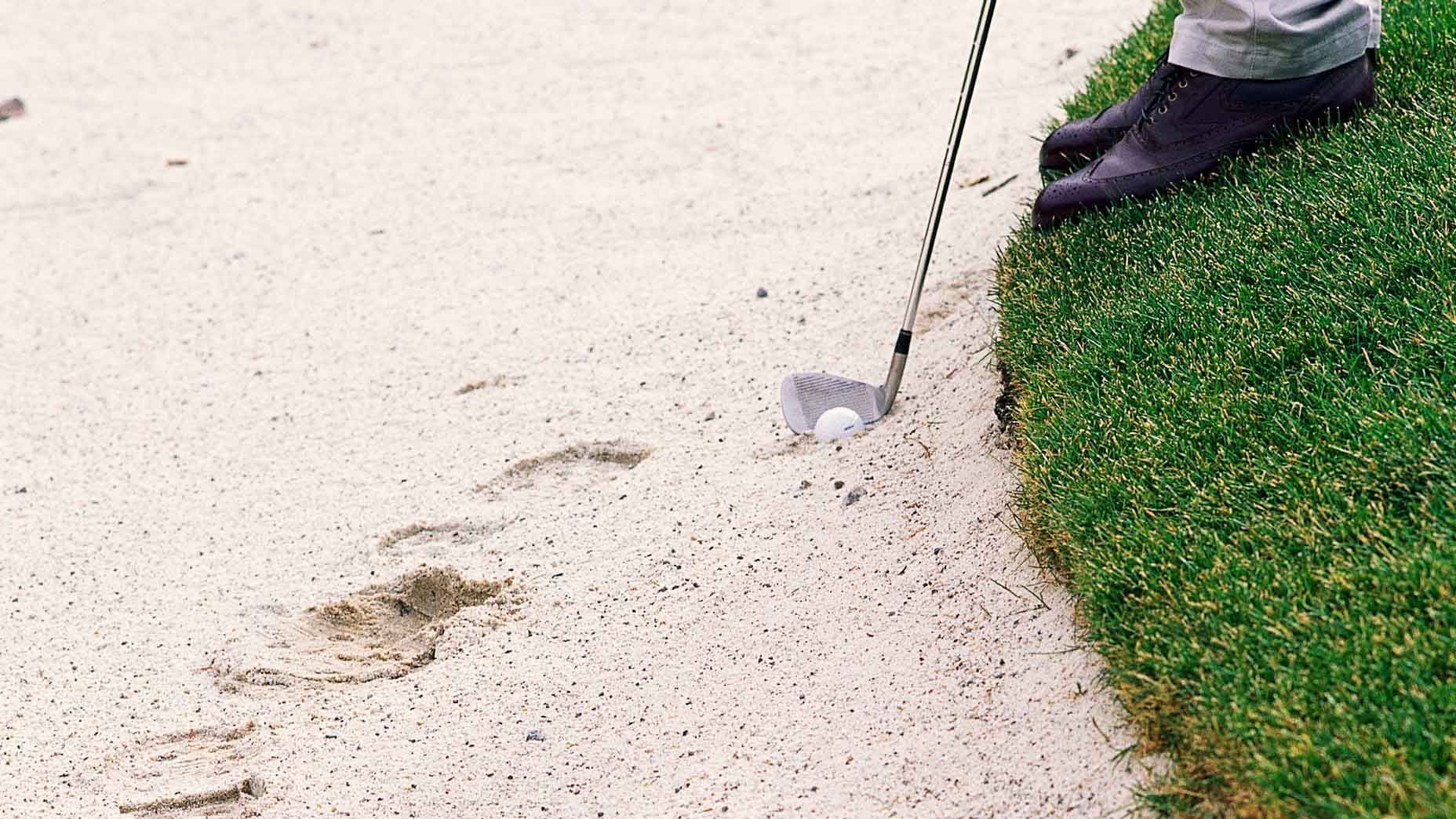I rank among the Tour’s best drivers, but I take even more pride in my iron game. Like you, I’ve suffered through frustrating bouts of “iron deficiency.” These days, though, crisp contact is automatic—my irons almost swing themselves. (In 2014, I finished seventh on Tour in greens hit from 150 to 175 yards, up from 41st in 2013.) When it comes to irons, I’ve cracked the code. The secret? Make the clubface feel like an extension of your body, moving and rotating in unity with your hip and shoulder turns. Hitting square, pure irons has never been easier. I’ve broken down my technique into seven simple moves. Use these keys to elevate your iron game and become a green-hitting machine.
1. ADDRESS

ALIGN YOUR BODY TO THE CLUBFACE, NOT VICE VERSA
Steal the straight-shooter’s secret to on-target alignment
I’m always asked what sets weekend players and Tour pros apart. Aside from some technique-related issues, the most glaring difference is in the way better players practice. You work on swinging the club. We work on hitting targets. As a result, amateurs tend to mis-aim like crazy. I’m guilty of aiming problems, too, and if a touring pro can line up too far left or right of the target, just imagine what alignment flaws may hinder your game. And the fix is not as simple as “set up square.” Your eyes can deceive you if you go about lining up the wrong way. The trick? First align the clubface square to the target. Then align your body to the clubface. It’s much easier this way than the other way around. Try this visual: Once you have the clubface set, imagine 2×4s attached to your chest, forearms, knees and feet. Adjust your stance until the boards point parallel left of the target line (photo, above), like four railroad tracks running in the same direction. This square setup gives you a much better chance of hitting your target.
2. TAKEAWAY

SLOW EQUALS SMOOTH
How do you take the club back with ideal tempo? It’s as easy as 3, 2, 1
I’m a “backswing-centric” golfer. If the first few feet of your motion are solid, I believe the rest of your swing will fall into place. But what do most weekend players do? They whip the club back or immediately hinge the club up. To relax your pace going back, try this: At address, count down aloud from three (“3, 2, 1”), then slowly, simultaneously move your shoulders, chest, arms, hands and clubhead. Counting down in an easy cadence lets you build smooth backswing momentum, so you won’t sprint out of the blocks. And it helps you feel the clubhead move and turn at your body’s pace. You’ve done it correctly if your arms and the clubhead reach the top at the same time.
3. BACKSWING

GET EXTRA STEEP TO GO DEEP
Point your left shoulder at the ball for a perfect, power-rich move to the top
I’m not a fan of the old tip that says to turn your left shoulder into your chin. Technically it’s correct, but it encourages a flat turn instead of the steep one you need for hitting an iron. And when your shoulder turn is flat, you tend to lift your upper body in your backswing and swing the club below the ideal plane. This results in a sweeping angle of impact (which causes thin shots), rather than an angle that allows the club to drive down and through the ball. My advice? Instead of turning your left shoulder into your chin, turn it under your chin. You’ll create the steepness needed for a descending attack. You’ve done it correctly if, when you reach the top of your backswing, your left shoulder points near the ball—not well behind it. It should also feel as though you’re pushing 100 percent of your body weight into the ground. Now you’re set to make perfect contact and compress the ball, adding yards with every swing.
4. DOWNSWING

MAINTAIN YOUR HEIGHT
Here’s an easy visual to ensure blistering strike every time
Pros talk of maintaining their “angles” on the downswing. What we’re really saying is we want to maintain our height, because the moment you dip your body or raise it up, your chances for quality contact go out the window. Focus on two areas in the downswing. First, keep the flex in your knees until just before impact—no straightening or bending allowed. Keeping your feet firmly planted on the ground will help with this. Second, make sure your chest is the same height at impact as it was at the top of your backswing. If you tend to lift your chest on your downswing (and catch the ball thin more often than flush), you’re probably standing too close to the ball at setup. On the other hand, if you’re guilty of lowering your chest (leading to fat contact), you’re likely standing too far from the ball. For a quick fix, look down at address and check that your hands are just in front of your toes. That will help you maintain your posture all the way down.
5. DELIVERY

“BUMP” YOUR LEFT HIP
A simple shift instantly corrects your swing path. Ball, meet the sweet spot!
Yes, you have to turn your hips in your downswing, but you don’t need to make it a priority. For starters, your hips turn no matter how much you think about turning them. And overdoing your hip turn makes your swing too flat through impact. Rather than aggressively clearing them, shift your hips toward the target at the start of your downswing, because this gets your energy moving toward the target. More importantly, it moves the bottom of your swing arc slightly ahead of the ball. The bump is what lets good iron players hit the ball first, then take a divot. Don’t be a “turn and sweeper.” Shift left and drive the clubhead down and through the ball. You’ll get much better loft, more distance, and the shot-stopping spin you need to hold fast greens.
6. IMPACT

HIT ALL THE WAY THROUGH THE ZONE
There’s more to impact than just contact. Keep swinging and squaring—or you’ll slice!
Weekend players are a little too obsessed with impact. They’re so focused on squaring the clubface at the exact moment they make contact with the ball that they actually stop their swing. “Hitting and halting” makes it virtually impossible to produce the contact needed to hit greens. The act of squaring the face should be a continuous movement, from roughly knee height to knee height. If you stop the natural rotation of your body and the clubface, you’re done for.
The dreaded “hit and halt” is also a fast track to thin contact, because when you stop rotating through impact, you tend to leave more weight on your back foot. I suggest you completely ignore the ball and picture impact as a point about a foot past your left big toe. That will encourage you to swing all the way through impact, to continue squaring the face, and to properly shift your weight over your left foot. You should feel as though your arms, body and clubhead are moving in unison and rotating at the same pace. Picture a triangle between your arms and in the middle of your chest, and swing it all the way through impact without altering its shape or position. That will make your contact crisper and more consistent.
7. FINISH

SEEK BALANCE
Combine all seven moves in one easy drill!
Your finish position is more than just the conclusion of your swing. It’s the result of all the moves you’ve made leading up to the finish, and it reflects the quality of your entire motion. Off-balance finish? Bad swing. Balanced finish? Good swing. It’s that simple.
If you’re mis-hitting your irons, start with the finish. Without a ball, make slow swings with the sole goal of finishing in perfect balance. Good balance is when you can hold your finish as long as you like, with the left side of your body—from your feet to your shoulders—forming a straight line.
If there’s any bend to your left side, or if your body is fighting to stay upright, you’ve lost some rhythm and tempo along the way. Make your backswing slow and deliberate. This sets the rhythm for your entire motion. It’s okay to feel as though you’re swinging slow. Trust me—if you make the other moves I’ve discussed on these pages, you’ll have plenty of swing speed where it counts: at impact. Plus, this drill lets you better sense the relationship between your body and the clubface, from start to finish. This is the type of full swing feel and control that will help you hit more greens and rip approach shots to tap-in range, leading to a lot more birdies.
For more news that golfers everywhere are talking about, follow @golf_com on Twitter, like us on Facebook, and subscribe to our YouTube video channel.






